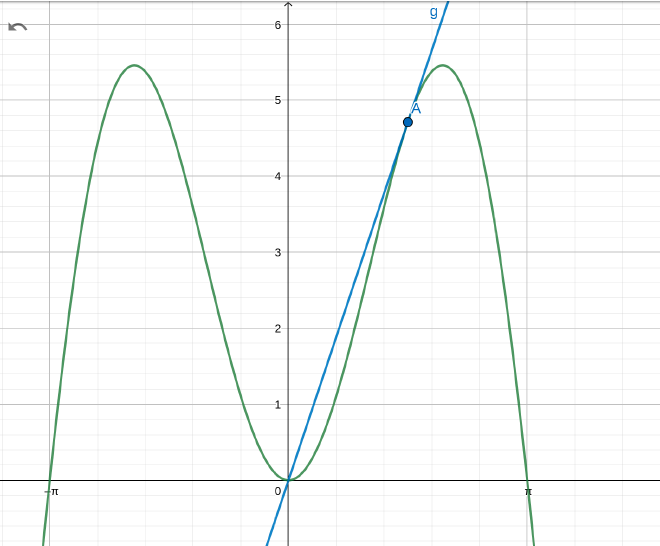Section 2.4
Table of Contents
Derivatives of trig functions
Derivatives of Trig Functions #
We saw last time the derivatives of sine and cosine which will be repeated here:
-
$\dfrac{d}{dx} (\sin (x)) = \cos (x)$
-
$\dfrac{d}{dx} (\cos (x)) =- \sin (x)$
Let’s use them to derive1 the rest of the formulas.
Tangent and cotangent #
-
$\dfrac{d}{dx}( \tan(x)) = \sec^{2}(x)$
We saw this last time, too. Use the quotient rule. If you don’t remember, try it again!
-
$\dfrac{d}{dx} (\cot(x)) = -\csc^{2}(x)$
Follow the same approach and use the quotient rule. Ask questions if you are unsure where to go.
Secant and cosecant #
- $\dfrac{d}{dx} (\sec(x)) = \sec (x) \tan (x)$
-
$\dfrac{d}{dx} (\csc(x)) = \csc (x) \cot (x)$
Repeat the above argument with cosecant and verify you can get this one.
Putting them all together #
Many examples #
- Find the derivative of $y = x^2 \sec (x)$
- Differentiate with respect to $t$, $y = \cos t + \sqrt{t}\sin(t)$
- Find the slope of the line tangent to $y = 3x \sin x$ at the point $(\pi/2, 3\pi/2)$
Here’s a picture (the blue line is $y=3x$ while the green curve is $y=3x\sin x$).

- A ladder 20 ft long rests against a vertical wall. Let 𝜃 be the angle between the top of the ladder and the wall and let x be the distance from the bottom of the ladder to the wall. If the bottom of the ladder slides away from the wall, how fast does $x$ change with respect to $\theta$ when $\theta = \pi/4$?
VIDEO HERE
Now some limits #
Here’s an important limit that we’ll come back to often:
$$ \lim_{t \to 0} \frac{\sin t}{t} = 1 $$
and
$$ \lim_{t \to 0} \frac{\cos(t) - 1}{t} = 0 $$
Deriving the derivative of sine. #
Let’s use the definition of the derivative to find the derivative of $\sin x$.
$$ \frac{d}{dx} (\sin x) = \lim_{h \to 0} \dfrac{\sin(x + h) - \sin(x)}{h} $$
Finding more complicated limits #
Find the limit $\displaystyle \lim_{t \to 0} \dfrac{\sin(4t)}{\tan(20t)}$
Now practice! #
Head over to WebAssign and work on the exercises.
Have a question? A comment? Want to clarify something above or on your homework set? Let me know!
-
Note that the word “derive” means “come up with.” It doesn’t mean ‘find the derivative,’ though in this case we are deriving the derivative. ↩︎